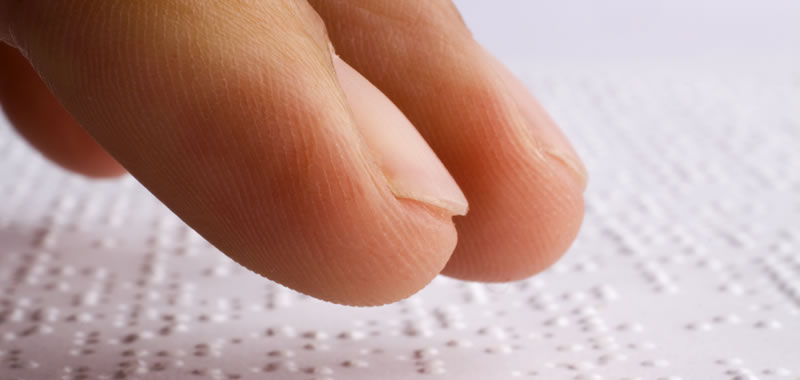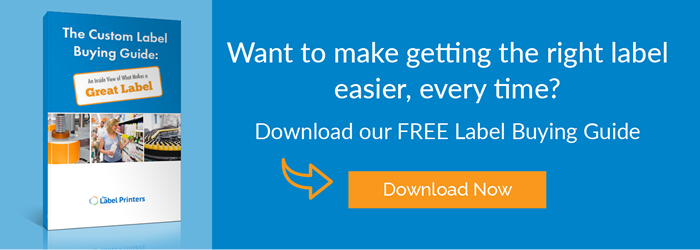
Among the many challenges blind or visually impaired people overcome every day is how to identify products at the grocery store, at the pharmacy, and around the house.
Most visually impaired people have perfected strategies to adapt. They may bring a friend or family member to the store to help them read labels. They learn the shape and feel of their preferred products. Some even attach their own Braille labels to the products they purchase so they can find them again easily in the kitchen or bathroom.
But labels don’t just identify products. They inform us about ingredients, give us instructions for use, and tell a brand’s story. You can make it easier for blind and visually impaired people to access this vital information — and find your product on the shelf — with the choices you make for your product labels.
Ask your custom label printer if they provide any of these label options for blind or visually impaired consumers:
1. Braille Labels
Braille is a system of raised dots that form letters and words people can read using their sense of touch. Since its invention in 1829 by Louis Braille, the tactile writing system has helped countless people with blindness and visual impairments read books, signs, and even mathematical and musical notation.
Braille is required on pharmaceutical packaging in Europe, but not in the U.S. Neither is it required on consumer product packaging — but it can make a big difference.
Members of the blind community applauded Coca-Cola for printing Braille labels for its successful “Share a Coke” campaign, though they lamented the option was limited to Mexico and Argentina. L’Occitane beauty products have included Braille since 1997, and the company has become a leading advocate for blind and visually impaired people.
If you are considering Braille for your product labels, however, keep in mind that fewer than 10 percent of legally blind people in the United States read Braille, according to d. And its usage seems to be declining. If you wish to reach all your visually impaired costumers, you may need to go beyond Braille on your product labels.
2. Large, Readable Print
Being visually impaired doesn’t necessarily mean being completely unable to see. Most people with moderate or even severe visual impairment can read with the help of large print or magnification.
The American Foundation for the Blind offers these tips for making print more readable:
- Use at least a 16-point font.
- Use clean, unadorned, bold fonts. The AFB says Arial is a good choice.
- Avoid italics or all capital letters, which are harder to read.
- The more contrast between the text and the background, the better. Light text (such as yellow or white) on a dark background (such as black) may be easier to read than the opposite.
- Avoid glossy paper, which creates glare.
- Allow room for adequate spacing between letters and lines of text.
3. Audio Labels
Mobile technology is revolutionizing how the blind and visually impaired experience the world. Navigational tools help people get from place to place and even run marathons, and text-to-speech apps help people read websites, signs, and documents.
You can set up your product label to deliver audio information to your customers’ mobile devices, as well. For example, your label can include a QR code consumers can scan with their devices to access a site delivering audio or large-print information about your product.
Last year, an Austrian company won an innovation award for a label that uses NFC (near-field communication) technology to embed up to 40 minutes of speech output. The advantage of the NFC technology over QR codes, the company says, is it doesn’t require internet access.
Is Your Product Label Accessible to the Visually Impaired?
If you would like to help blind or visually impaired consumers learn about your products, find them on shelves, and experience your brand identity, start by discussing your goals with your custom label printer. Whether you want to emboss Braille on your label, print bold, high-contrast lettering, or embed QR codes, a good label printer should have the tools and experience to help.
To talk about making your product labels accessible, contact The Label Printers today. And to find out more about some of the things to consider when ordering labels, download our free Custom Label Buying Guide.

